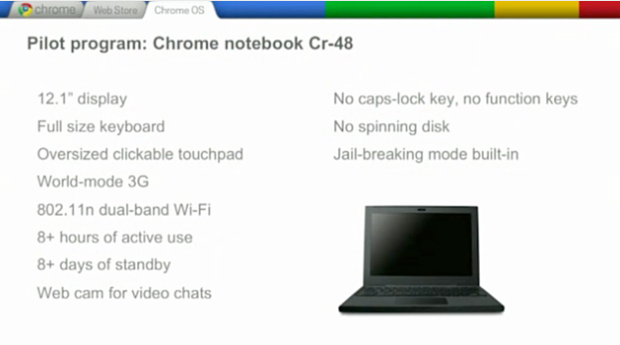And it seems to work and work well. This is the Bloom Box being used right now at Google, eBay, FedEx, Wal-Mart and Staples. A fuel cell device from US-based Dr KS Sridhar’s start-up company, that uses a stack of ceramic disks all put together inside a box the size of a bread box and can generate about 1 kilowatt of power. It’s costly right now, but in a few years we all maybe able to have our own power plant in a box and kiss power outages .
Friday, February 25, 2011
Personal power generators
And it seems to work and work well. This is the Bloom Box being used right now at Google, eBay, FedEx, Wal-Mart and Staples. A fuel cell device from US-based Dr KS Sridhar’s start-up company, that uses a stack of ceramic disks all put together inside a box the size of a bread box and can generate about 1 kilowatt of power. It’s costly right now, but in a few years we all maybe able to have our own power plant in a box and kiss power outages .
Virtual Everything ...even people!
Thus, a shoot in the tulip gardens in Amsterdam for Yashraj studios will cost practically nothing (bonus: no more star tantrums!). Doctors and lawyers will be available 24 hours as their virtual avatars will always be at hand to take as many calls as their HD conference call facilities can handle. Even an SMS from your phone will be delivered by a 3D holographic miniature version of you popping out of the recipient’s phone. Virtual will be virtually everywhere.
Self-healing materials 2015

There’s nothing more likely to drive you into spasms of hysteria than the sight of a dent on your swanky new car. Don’t worry, there’s a billion dollar industry to help you cover up, protect, insure and repair all that you own. Could the laptop that fell off the table self heal at night and be perfect when you wake up in the morning? Can the scratches on your car and phone be self-aware and vanish overnight? Yes, they can and most of it is happening right now.
These smart materials have the ability to repair damage without human intervention. Just like the human body has the ability to heal after being wounded, various polymers, plastics, ceramics and paints now have self repair abilities. Lots of different approaches exist: microcapsules that burst when paint gets scratched and coat over the scratch. Or polymers with bond catalysts embedded that mix with it to renew a surface when dented or defaced. There is even Solid State and Biomimetic repair technology that is working. Time to toss that thick, padded cell phone cover in the trash!
Thursday, February 24, 2011
Why is the sun's atmosphere hotter than its surface?
NEW CLUE MAY SOLVE SOLAR MYSTERY
Human teleportation
And enough signs of it coming about one day are in place. Scientists have managed quantum teleportation with photons where an object is dematerialised at one point and the details of that object’s atomic configuration are then sent to another location where it is precisely reconstructed. (All hell breaks loose if it’s not, though. Imagine being beamed from home to office and arriving as a globular green mess because something went wrong!) Right now, a photon, a laser beam and a laser beam carrying information have been successfully transported.
However, a human being is a million times more complex. The catch is that for teleportation to happen, the original must be destroyed. So when you are beamed on a trip to Paris, your original will be zapped to nothing and you must hope and pray that the one that they recreate will have the exact same body, face, thoughts, memories and mind. Otherwise, the person enjoying the sights of the Eiffel Tower may just be a totally different person – and you may not exist, all because you were in a hurry and didn’t want to take the flight.
Wednesday, February 23, 2011
Earth could be 'unrecognizable' by 2050, experts say
A growing, more affluent population competing for ever scarcer resources could make for an "unrecognizable" world by 2050, researchers warned at a major US science conference .
The United Nations has predicted the global population will reach seven billion this year, and climb to nine billion by 2050, "with almost all of the growth occurring in poor countries, particularly Africa and South Asia," said John Bongaarts of the non-profit Population Council.
To feed all those mouths, "we will need to produce as much food in the next 40 years as we have in the last 8,000," said Jason Clay of the World Wildlife Fund at the annual meeting of the American Association for the Advancement of Science (AAAS).
"By 2050 we will not have a planet left that is recognizable" if current trends continue, Clay said.
The swelling population will exacerbate problems, such as resource depletion, said John Casterline, director of the Initiative in Population Research at Ohio State University.
But incomes are also expected to rise over the next 40 years -- tripling globally and quintupling in developing nations -- and add more strain to global food supplies.
People tend to move up the food chain as their incomes rise, consuming more meat than they might have when they made less money, the experts said.
It takes around seven pounds (3.4 kilograms) of grain to produce a pound of meat, and around three to four pounds of grain to produce a pound of cheese or eggs, experts told AFP.
"More people, more money, more consumption, but the same planet," Clay told AFP, urging scientists and governments to start making changes now to how food is produced.
Population experts, meanwhile, called for more funding for family planning programs to help control the growth in the number of humans, especially in developing nations.
"For 20 years, there's been very little investment in family planning, but there's a return of interest now, partly because of the environmental factors like global warming and food prices," said Bongaarts.
"We want to minimize population growth, and the only viable way to do that is through more effective family planning," said Casterline.
Monday, February 21, 2011
Google Docs Gadget Preview in GMail
GMail has been an amazing feature and mail service launched by Google and it offers impressive more than 7 GB of data storage with every account.
Google Docs Gadget adds a box in the left column which displays the Google docs . This shows the recent docs, starred docs and fast search of the docs inside your GMail.
To get this you need to enable this features as its available in GMail labs.
This is how the preview of Google Docs Gadget looks in your GMail –
With a click on a document or spreadsheet you are taken to the respective docs in a new tab. If you click on All Docs you would be taken to Google Docs homepage. You can also create a new document or spreadsheet or form with a click on New and it will ask for what document you wanted to create.
GMail Labs has been amazing feature which has amazing features like ‘undo send mail in email’ , email beta.You need to visit GMail Labs and enable this feature through settings
You can exclusively search for any docs in the Google Docs Gadget search and can get sneak preview from your GMail.
Download GMail VoiceMail in MP3

Google Voice Chat is an amazing feature launched by Google which extends the capabilities of GMail as your mailing services. Along with it we have many new features in GMail Labs like Google docs preview in g mail, undo send mails and lot more in GMail Labs. When you and your friends are online you can switch over to voice chat for a quick chat over voice.
So what if I am offline and my friends wants to leave a message for me? You can simply leave a chat message or you can go with Google VoiceMail where you would be sending voicemail to your friends which would be seen by your friend whenever he visits the Inbox to check his mails.
So how would you listen to the Voicemail in your inbox. Its quite easy. You need to open the mail containing the voicemail and you can play the voicemail with your browser (should support flash player) or else you can download as MP3 and play in your media player.
Here is the one which I have received as Voicemail -
How to Upload Videos in Google Docs

Google Docs Video Upload & Play
Google introduces another interesting feature to the Google Docs and just a perfect start to the new year. Now with Google Docs you can upload videos, preview it completely and can easily share with the users that you want to share with.
With Google Docs upload and sharing of videos gets lot more easier and faster with reliability.
Video formats which are supported by Google Docs Video Player are
- Adobe Flash Video codec (FLV Format)
- Windows Media Video (WMV Format)
- MPEG2 Video Codec and MP2 Audio
- Audio Video Interleave (AVI format)
- H264, H263, MPEG4 video codec and AAC audio code
- WebM video files
While the total size permitted in Google Docs remains 1 GB to any users the video player in Google Docs support a video playback of 1920 x 1080 which means that user could get high quality of videos in HD format similar to those found in YouTube now.
Once you have uploaded the video you would have easy options of sharing it with others users or public or wanted to keep it drafted. And you also need a flash player to play those videos on to your browser.
Once you have upload you video you can easily have a preview and details of the video on the right side. Here is the one which I have uploaded it just now-
Wondering why there is no preview for this video which I have uploaded but normally they provide you preview of whatever video uploaded and actually in those preview you can complete watch that video.
So this becomes alternative to YouTube where video sharing for the private users was very difficult options and as Google Docs is known for files, docs and other documents sharing with a limited group of people this would be the right place to make it happen and its adds another wonderful options to Google Docs.
Sunday, February 20, 2011
Modular gadgets 2011

Motion Computing 2011

Flap those arms, swing them legs, jump, hop and skip, because the future is all about groovin’! Microsoft, the company that chained you to your desks by putting a computer on each one you own, now wants you to get up and get moving via ‘Kinect’, a small sensor-like device that plugs into your Xbox 360 videogame console. YOU are now the controller! Killing an in-game monster with your sword? Simply make a slashing motion with your arm in the air in front of you.
But the real move forward isn’t about gaming. It’s about your body, your voice, your gestures having true meaning to control all the technology and gadgets around you. Imagine walking into a room where the system recognises you, gesturing to your computer to fire up the browser, dictating an email and sending it with a flick of your wrist, setting up a video conference just by calling out names. Blade Runner, here we come!
Into the future
Even if we move away from the pros and cons and heavy futuristic Terminator-like scenarios, the potential of tapping and backing up the great minds of this world are amazing.
Think of every scientist, visionary and innovator whose amazing thought process has been lost. If only we could have a way of retaining it and keeping all that ran thorough that exceptional mind! Technologies that read our thoughts and map memories are already in place and being used. Ian Pearson, head of British Telecom’s futurology unit, seems to think that this will happen in the middle of this century but will only be available to the super rich. So start saving if you want cyber-immortality!
Electric cars 2015
Efficient, great-looking, fast performance electric cars are starting to look good. Better battery technology, fuel cells and fast recharging could make sure that all our cars are silent, efficient and totally green. Even recharging could be dispensed with. Drive up to a battery pump station, unplug your battery, plug in a charged one and zoom away in less time than it would take you to tank up today.
In the Next few years Twist me hard Flexible screens 2017
Giants like Sony, LG and Samsung all have various forms of rollable and bendable displays, all vying to become the hottest ticket to our converged, single-device future.
My smartest web TV 2011
App stores, Twitter and Facebook integration, YouTube streaming and games, all delivered via the Internet, promise to change the way you watch TV – forever. Google, Apple, Boxee, Roku… the biggies are already fighting for a slice of the pie. Will the domination of the large TV networks scuttle their plan? Only time will tell.
Thursday, February 17, 2011
Bahamas' 'blue holes' hold wonders and weird science

In next month's issue of national Geographic magazine, an international team of cave divers led by anthropologist Kenny Broad of the university of Miami reveals the mysteries hidden from vacationers' view.
The two-month expedition, paid for by the national Geographic society, was merely a small slice of time in a years-long effort to uncover the secrets of this realm, which has been plumbed by researchers for at least three decades.
Only a few miles inland from the Bahamas' sparkling coral reefs, the islands' limestone boasts dozens of submerged caves, "blue holes," some of them hidden in what look like island swimming holes linked to the ocean.But swimming holes they are not. The inland caves on five islands sport freshwater caps covering heavier saltwater layers, sometimes filled with clouds of poisonous hydrogen sulfide released by salt-eating microbes, acting to preserve whatever falls within. Others contain whirlpools powered by the tides."Cave diving is really about knowing your limits," Broad says. "But it provides one of the most amazing experiences in life, and the scientific opportunities are tremendous."Says cave diver and geologist Patricia Beddows of northwestern university in Evanston, Ill., who was not part of the expedition: "Each one of these cave diving expeditions, without fail, provides an enormous amount of information. Cave diving is an extraordinarily powerful tool to allow us to get into the heart of karst (cave) systems worldwide."
In submerged caves such as Stargate on Andros island in the Bahamas, the expedition team reports:
• Specialized "chemosynthetic" bacteria that live without oxygen and feast on chemical reactions possible only in the caves.
• Stalactite curtains, or "speleothems," that contain a record of past sea level and climate conditions locked in their structures.
• Fossils of Lucayan tribe members who lived on the islands until the 1500s.
"We've brought scientists from many disciplines together so our results inform each other's work," Broad says. "The initial exploration is just a proof of concept. We still have lots of work ahead."
Coastal regions of the Caribbean, such as Florida, Cuba and the Yucatán, and other regions worldwide contain limestone permeated with caves, Beddows notes, leading to such blue holes. In addition to their scientific value, they often serve as freshwater resources for increasing numbers of people in those regions, which makes investigation of them essential for public health.
Sea level about 20,000 years ago, during the height of an Ice Age, was hundreds of feet lower in the Bahamas. The transition has left its mark on the speleothems and geology of the caves, Broad says, making each one a laboratory for measuring the effects of past changes in climate.
Each cave diving expedition requires years of preparation, and the results will affect scientific conclusions for years afterward.
"It's possible to make a direct comparison between what we do and exploring outer space," Beddows says. Years of training for short investigations in a hostile environment are the hallmarks of cave diving science, which she describes as a "select" discipline, slowly growing in numbers but now increasingly established.
Alongside the danger, the blue holes of the Bahamas have offered little allure for divers who in some cases could instead walk to beaches with access to some of the world's most beautiful coral reefs.
Tuesday, February 15, 2011
Chocolate better than fruit juice

Brain Bugging Bites

Saturday, February 5, 2011
Google Unveils Chrome OS, New Browser, Web Store Apps
Chrome Browser
Sundar Pichai, who headed up today's presentation, began with a few stats on the browser's success. It's grown to about 120 million active users, he said, up from about 70 million not too long ago. The single most common conversion factor: Chrome is fast. Now the Chrome team is trying to make it faster.
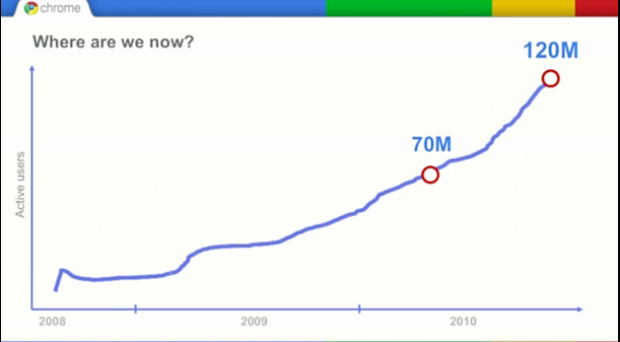
Google Instant integration. We already have Google Instant, the real-time search engine that shows results with each letter typed. The Chrome team has brought that to its browser, and now results show as they do on Instant when searching from the address bar. What's more, commonly visited websites load automatically in real-time, without having to hit Enter. Usually visit ESPN, or Twitter, or CNN? Typing E will load ESPN instantaneously, T for Twitter, and C for CNN.
Built-in PDF reader. One of the worst parts of the browsing experience is loading PDFs. They either pop-up out of the browser or require a plug-in to load. Regardless, PDFs are slow. The Chrome team developed a native reader; now PDFs as large as the recent health care legislation load just as fast as a one page document.
Hardware Acceleration. Web pages are becoming more and more graphically intense, and Chrome--following the example of other browsers, such as Internet Explorer 9--is amping up its efforts to provide better hardware acceleration and HTML5 support.
Crankshaft. Google has worked hard at improving its Java support, and according to Pichai, a new service called Crankshaft has allowed the browser to become fifty times faster over the past two years.
Chrome Web Store & Apps
"It looks very different than a webpage today," began Pichai. "[These are] very rich, visual, interactive applications."
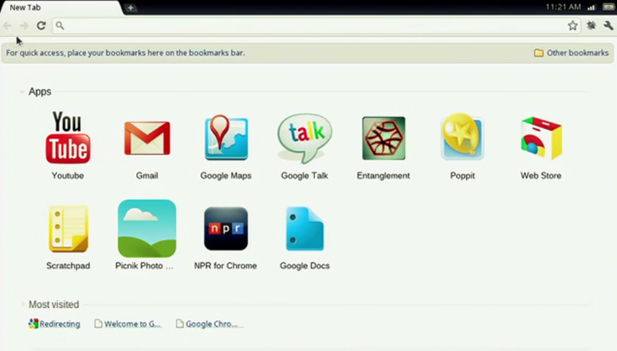
The new Chrome Web Store is essentially the browser-based equivalent of Apple's app store. Much like Microsoft aimed for with Internet Explorer 9, Google is trying to bring that experience of apps off your mobile phones and to your laptops and desktops.
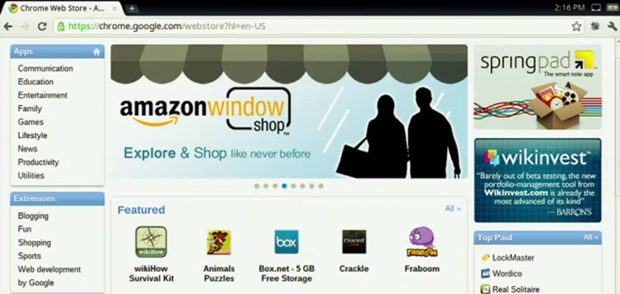
Rather than feature a clunky website, companies can now create rich online apps that are far more streamlined and interactive than your average webpage. The New York Timesshows off their app--a beautiful online newspaper that goes beyond the typical port-the-text-and-photos-from-newspaper format. It feels much sleeker than a website--it feels like it should be on an iPad. What's especially exciting is that this news can be accessed offline--but we'll come back to that in a moment.
Amazon, too, showed of its app--another great example of an online experience enhanced by HTML5 and app-like interactivity. Products can be dragged-and-dropped, and purchased with a simple click of a button.

And that's the most important part. As with iTunes, which stores your credit card information, Google will now store your payment data using your gmail.com address. Users can easily bounce around the app store, discovering new apps--from image editing software to radio programs to games--and purchase them just by logging in.
The goal, according to Pichai, is not just to provide users with a better experience, but to provide a central portal of online apps that will enable developers to earn money from their work.
Chrome OS
Here's what you've all been waiting for. Google unveiled its operating system, based entirely on the Chrome browser experience. This is not a typical OS--there is no desktop--just a browser. There is no taskbar or docking bay--just a list of Chrome tabs. There are no heavy program installs and OS updates--just the Internet, websites, and Chrome apps.
"On their computers, people live on the Web, yet most of the complexity and maintenance you deal with on the system has nothing to do with the browser," said Pichai. "If you were writing an operating system today, this is not how you would write it."
When you open up a netbook running the Chrome OS, you just see a browser window, because that is very much all it is. Users might be met with a log in screen, and all they must enter is their gmail.com address. As Pichai explained, it takes less than 60 seconds to set up for the first time--just a few simple clicks.
Instant On. Since the operating system is entirely web-based, starting the computer is no different than opening a Chrome browser window. It boots near instantly; it sleeps near instantly, and it resumes near instantly.
The Cloud. Since the Chrome OS is cloud-based, everything is synced to the Web. By logging into Google, users gain access to their email and downloaded apps. Users can edit documents on Google Docs or edit images using one of the downloadable apps--anything you can do on the web you can do on Chrome OS, and now with its app store, the number of browser-based applications could make this computer as versatile and stripped-down as an iPhone or Android.
Logging On. Multiple users can log in to one netbook using their Gmail addresses, and a guest access is available using incognito mode, meaning no browser history is captured.

Verizon Partnership. Google has partnered with Verizon to bringing cellular connection to netbooks, providing 3G connections. There are no contracts, plans will start at $9, and there are no overage or cancellation fees. The self-activation is easy, and takes about five minutes. Day passes are available, and you can also buy chunks of data for 1GB at a time. What's more, 100MB of data is available for free every two months.

Shipping Date. Google is launching a pilot program. Some lucky Google users will be sent a brandless laptop to test the Chrome OS; others, feel free to apply to join the program. Acer and Samsung will begin shipping Chrome netbooks in mid-2011, and other OEMs will follow.
Tech Specs. The pilot program netbook--the one Google is shipping to developers and certain select Googlers--will likely serve as the model for many companies. The netbook has a 12.1" display, a full-size keyboard, built-in 3G and Wi-Fi, webcam, 8 hours of active use, and more than 8 days of stand-by time. There is no Caps Lock key or function keys. There are no hard drives or spinning discs--but "more than enough gigabytes" to keep you going. Best of all, Google has made jail-breaking the netbook a built-in feature.
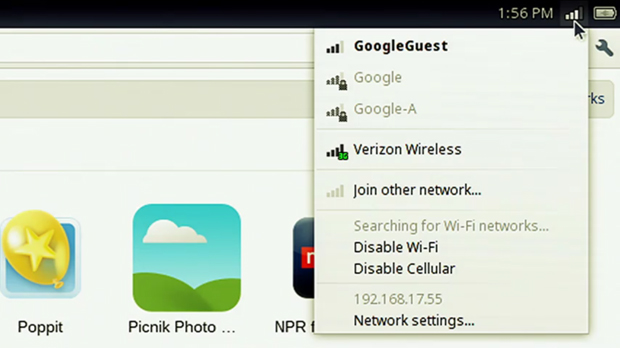
Benefits of Chrome OS
The central benefit that Google highlighted today was just how much bagged the Chrome OS shed by moving beyond the traditional operating system. By creating a browser-based system, the system, Google says, is far more secure, accessible, simple, and inexpensive.
Currently, to keep your computer updated, the onus is on the user. That means installing updates for Mac and Windows operating systems; that means installing updates for Microsoft Office or DIVX or Adobe Flash or Firefox. With Google's Chrome OS, all those updates are handled by the browser internally, and updated automatically. Essentially, an upgrade of the operating system will automatically be installed every few weeks; fixed for apps and plug-ins will be seamless and invisible. You can forget service packs.
For businesses, this is especially exciting, and many have already signed on to join the pilot program, from American Airlines to Logitech to Virgin America. It creates a stripped-down experience that can run on its own--without the struggles of costly IT support. Google said the OS is "magnitudes different" in costs of ownership and licensing.
The Chrome OS is the instant Web, the same experience everywhere, seamlessly sharing, always connected, secure, and forever new.
